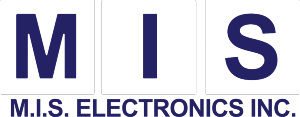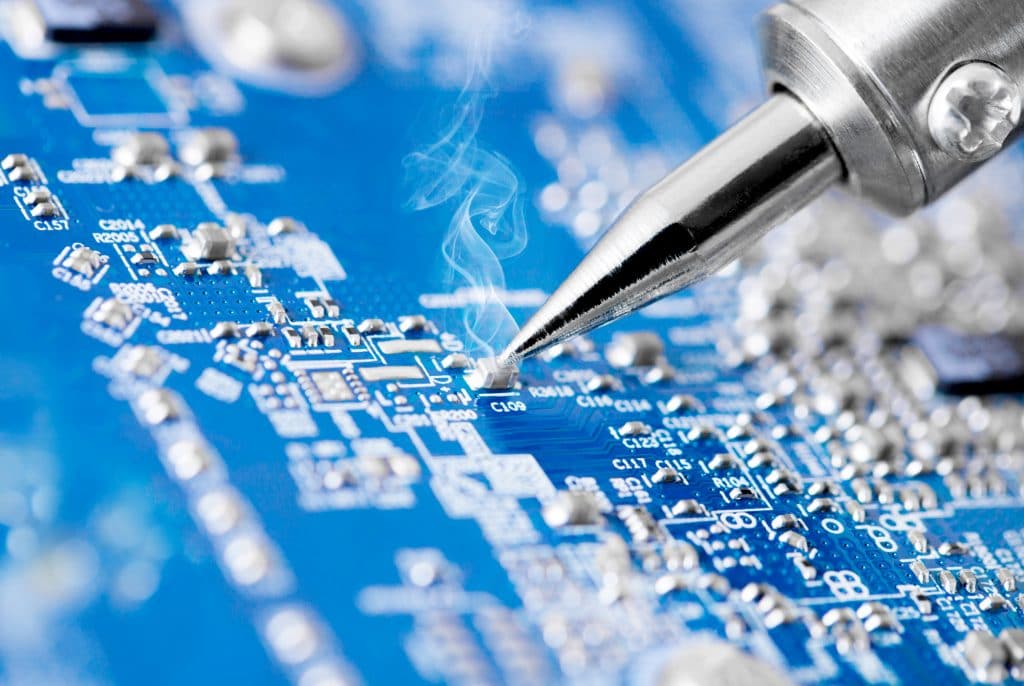PCB assembly, also known as PCBA, is the process of arranging and attaching electrical components to a circuit board with solder. A printed circuit board (PCB) works at the heart of every electronic device. Whether it is a smartwatch, a microwave, or a quantum computer, there is an impeccably-assembled PCB inside directing electrical signals that power the device.
Soldering is the first and most crucial step in the PCB assembly process. A soldering flaw could cause the device to malfunction or perform in an unintended way. Soldering is, therefore, a key determinant in the overall effectiveness of an electronic device.
A behind-the-scenes look at the PCB assembly and soldering process
There are different soldering techniques used to attach electrical components to a PCB.
When PCBs are mass-produced, an automated pick-and-place machine picks up components and places them on the board. A reflow oven heats the solder paste and cools it gradually to reinforce the joint.
For low-volume production, such as prototypes, skilled technicians hand-solder components using a soldering iron and a solder alloy. If components are very tiny, a microscope and a pair of tweezers guide their exact placement on the board.
Though assembly and soldering is technologically advanced, soldering as a procedure dates back thousands of years. The first historical soldering record details metal-work from artisans in Mesopotamia!
Today, every smart device contains a PCB. Some components are smaller than a grain of rice, assembled tightly on a compact chip. How do manufacturers ensure all components are correctly positioned, aligned, and firmly attached to the board?
PCB assembly and soldering techniques
There are two types of components: surface mount and through-hole.
Surface-mount components sit on top of the board, while through-hole components have wired legs that fit through drill holes. Modern PCB assembly factories usually use surface-mount components as these are easier for robots (automated machines) to handle.
Soldering of surface-mount components
The first step in surface-mount component soldering is to apply solder paste. A solder paste stencil machine releases microscopic amounts of solder paste with great precision—just enough to stick the tiny components onto the board in commercial mass production.
The board and components then pass through a reflow oven along a conveyor belt. The temperature of the board gradually rises until the solder paste melts. Then the board is cooled again so that the solder material solidifies and creates a strong joint between the solder material and the component, fixing it to the board.
A solder paste inspection machine tests and ensures that the right amount of solder paste is applied. If there’s too little or too much solder paste, defects or malfunction could result. A poorly-soldered PCB is not good news for the electronic device! Quality control at this stage of assembly is vital.
Once the board comes out of the oven, the soldering is complete. Most modern PCB assembly factories have Automated Optical Inspection (AOI) machines that visually inspect the boards. Different coloured lights reflect off the solder joints. A master board is compared to the newly assembled boards to detect mismatches. Technicians then use a soldering iron to repair faulty boards. Automated inspection ensures correct solder joints. This process is much faster and more effective than manual testing.
Hand assembly and manual soldering is reserved for prototypes and low production runs as the machine setup and configuration costs are too high at low volume. But hand assembly is a better option for intricate work in small areas that are difficult to solder using automated machines. Manual soldering is used for through-hole components when the volume is small.
Wave soldering
A wave soldering machine is an appropriate technique when production volume is high and there are many through-hole components. Wave soldering uses a pool of liquid solder to stick metal parts on the bottom of the board, such as the copper pads and the wire legs of through-hole components. A solder mask (usually green in colour) prevents the liquid solder from sticking to other parts.
This process is faster than traditional approaches and is more effective than manual soldering. It is relevant for both surface-mounted and through-hole components.
Quality control and tests to check for soldering faults
Quality control tests are conducted throughout the soldering process. Once soldering is complete, technicians test component functionality. Modern PCB assembly and soldering factories have automated IoT devices to carry out this testing using test scripts. Advanced PCBA factories also use an X-ray machine to screen assembled boards.
The PCB assembly and soldering processes are too important to leave to untrained or semi-skilled workers. Trust an experienced PCB manufacturer like MIS Electronics with your PCB assembly requirements. We provide high-quality components and advanced electronic component assembly solutions. And, because we’re a turnkey electronics manufacturer, we back up PCB design, prototyping, assembly, and testing services with superior customer service. Get a free quote from MIS Electronics today, your local Canadian one stop PCB shop.

